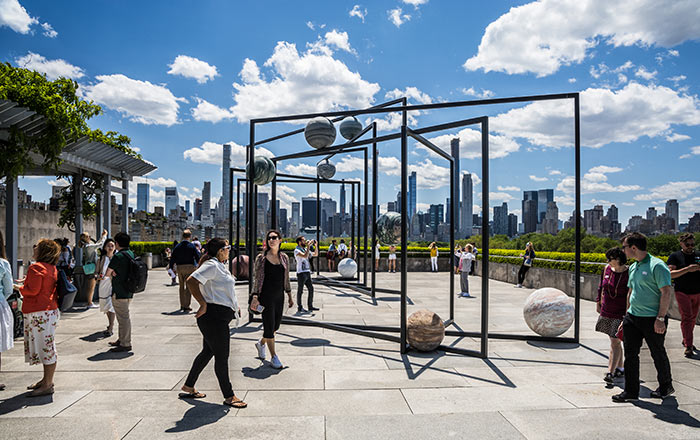Spring Veils
Edna Andrade American
Not on view
Interested in exploring the expressive potential of logical systems and inspired by the mathematics of the environment, Andrade — best known as a progenitor of the Op Art movement — used geometry and color to create abstract interpretations of organic ratios, biological systems, and natural rhythms. The surface of Spring Veils is covered with a series of vertical, undulating stripes that mimic the movement of rippling water. From left to right, these forms slowly transition from shades of pastel gray to soft browns. Down the center of the canvas runs a row of seven luminescent golden orbs; the intensity of their hue contrasts with the painting’s subtle background, making them appear to float in space. However, rather than simply tricking the eye, the painting presents a harmonious, meditative surface that draws inspiration from nature as well as 19th-century color theories, Orphic Cubism, and the Bauhaus.
This image cannot be enlarged, viewed at full screen, or downloaded.

